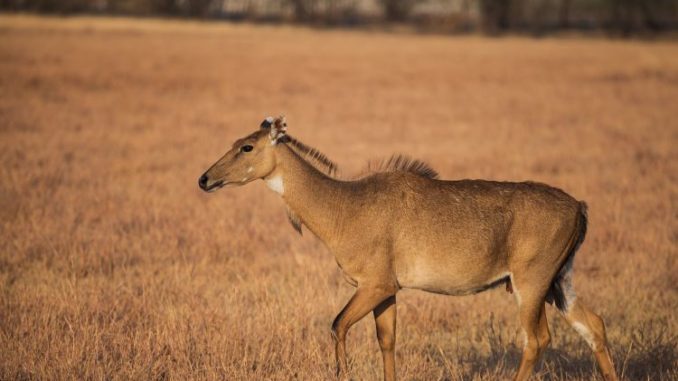
State sending off blood and tissue samples to ensure animal no threat to local deer herd
An escaped exotic Asian antelope was shot on Richard K. Yancey Wildlife Management Area Thursday morning, and blood and tissue samples are being sent off to ensure the animal was not carrying any diseases potentially harmful to the state’s deer herd.
Louisiana Department of Wildlife and Fisheries’ deer study leader Johnathan Bordelon said workers spotted the female nilgai — the largest Asian antelope on the Indian subcontinent — on a levee in the central part of the WMA, and first thought it was an escaped cow elk.
“That would have been alarming enough because of the threat of Chronic Wasting Disease,” Bordelon said. “But this is not a member of the deer family. It’s more with hoof stock and sheep — they’re a different genus, even though they still have hooves.
“But we still pulled all the same samples that we would have, and we’re going to test it for CWD. We really don’t consider it to be a threat for it, but at the same time, we’re going to test for it anyway.”
No cases of CWD — a fatal brain infection found in most deer species — have been found in Louisiana. But the state is continually testing animals and taking proactive measures, including a possible ban on out-of-state deer carcasses currently being considered by the Louisiana Wildlife and Fisheries Commission.
Bordelon said the antelope Thursday did not have any tags or tattoos indicating potential ownership.
“This kind of stuff happens,” he said. “There are exotics, and people can possess them legally, so it’s not illegal to have them. You just have to have them permitted.
“For this particular animal, we don’t know how far it roamed or where it escaped. You just don’t necessarily want it roaming all over your public areas.”
Typically, no one comes forward to claim an animal in cases like this, Bordelon said.
“They’re worried about being liable or responsible for anything,” he said. “Because if it gets killed on the road, they don’t know if they’re going to get in trouble. And they don’t want any responsibility if it turns out to be positive for something bad.”
Bordelon said tissue and blood samples from the nilgai were being sent to the Southeastern Wildlife Cooperative Disease Study on the University of Georgia’s campus in Athens for further testing.
“We don’t kill it and take pictures of it and get it mounted,” Bordelon said. “We pull samples for testing and actually burn up the animal out of precaution.”


